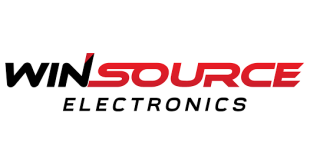When semiconductor revenue contracted in 2008 and 2009 as the global economy went into recession, so too did the number of counterfeit products in circulation. However, when semiconductor industry revenue rebounded by a hefty 33 percent in 2010, reports showed that counterfeit reports surged by a 152 percent.
This year the semiconductor industry is entering a new expansion cycle, with revenue growth accelerating to 4.3 percent, up from 1 percent in 2011. Growth is expected to rise to 9.3 percent in 2013.
With supply chain participants in 2011 reporting a record 1,363 separate counterfeit-part incidents worldwide conditions now are prime for counterfeit reports to reach new highs in 2012.
“The semiconductor industry is exhibiting the classic signs of the start of a new growth cycle, with tightening supplies, broad-based price increases and a lengthening of lead times for the delivery of products,” said Rick Pierson, principal analyst for semiconductors at IHS. “These are prime conditions for suppliers of counterfeit parts, which are eager to fill supply gaps with their fake goods. For semiconductor purchasers, the rise in counterfeits represents a major risk, bringing downsides in terms of financial losses, damage to company reputations and even safety concerns in some products.”
Most electronic components appear to be experiencing a tightening of supply along with an increase in pricing and lead times. Price increases are expected to continue rising throughout 2012.
IHS now predicts that demand will exceed supply in the third and fourth quarters for many widely used components, including capacitors, NAND flash, dynamic random access memory (DRAM), power semiconductors and logic chips.
Such shortages represent a prime environment for counterfeiters to thrive.
“Counterfeiters have gotten more sophisticated,” Pierson noted. “They watch the market and know where the weaknesses are. They know which products are in short supply and can generate profits. And they also know when market conditions are shifting in their favour.”
For example, counterfeits surged in the wake of the Japan disaster when concerns regarding supply shortages prompted panic buying of semiconductors and other components.
To defend themselves against the counterfeit scourge, electronics buyers must arm themselves with knowledge.
“It’s critical to discuss the counterfeit issue, to understand the reasons why incidents of fake parts are on the rise and to identify the markets where these phony parts are appearing,” Pierson observed. “This is because the counterfeiters are certainly analyzing the electronics market, probing for weak points and seeking opportunities to exploit opportunities as they arise.”
Amid the strain of keeping production lines running, the issue of counterfeit parts is sometimes neglected. However, companies that fail to pay attention to the issue face a range of risks. A 2009 survey conducted by IHS showed that electronics buyers have an array of concerns.
For buyers in the defence and aerospace industries, concerns include failures in aircraft safety and compromises to systems that are critical to national security. For players in commercial markets, issues range from damage to company image, to erosion in customer trust, to loss in revenue, to increased delivery time, to rising risk of legal action arising from product failure.
The task of avoiding the pitfalls of counterfeits is not always straightforward.
“To reduce counterfeit incidents, electronics buyers strive to restrict their purchasing activities to their customary supply chains, sourcing parts directly from their suppliers or from franchised distributors,” Pierson said. “However, the mandate for electronics makers is to keep their production lines running at all costs and sometimes to do that they go outside of the supply chain to obtain parts.”
Even franchised distributors sometimes buy excess inventory from other companies that could introduce counterfeit parts to the supply chain, Pierson noted.
To mitigate the counterfeit problem, electronics buyers must develop a plan to ensure continuity of supply. Such plans, similar to companies’ contingency preparations for disasters, require firms to update their listing of suppliers, parts/materials, life cycles, logistics and internal operations. For every supplier, buyers must create and update the supply profile of that entity.
Doing this is more important in times when counterfeit activity is on the rise. It’s also critical to identify which parts and markets are more susceptible to counterfeit activity.
 CIE Components in Electronics
CIE Components in Electronics



